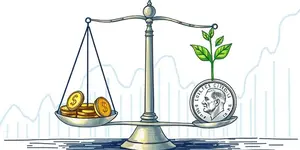
In mid-2025, investors navigate a world of volatility and strategic opportunity driven by changing central bank policies, cooling inflation, and uneven global growth. Crafting a resilient portfolio demands both agility and discipline.
The first half of 2025 has been defined by uncertainty. Equity and bond markets have swung on shifting rate outlooks, while geopolitical tensions add an extra layer of risk.
Interest rates remain near near multi-decade high yields, yet forecasts point to the possibility of Fed rate cuts in the latter part of the year. Cooling inflation trends in the US and Europe contrast with modest global expansion, leaving central banks divided on the path ahead.
Banking sector fundamentals are under the microscope. US banks may see net interest margins settle around 3% by year-end, but European and Asian lenders could face margin pressures as rate cuts materialize and growth slows.
Changing interest rates affect each asset class uniquely. Understanding these dynamics is the first step to positioning for both protection and growth.
In an environment of potential peak rates and eventual easing, combining offense and defense is key. Consider the following tactical approaches:
Above all, avoid wholesale abandonment of fixed income. Elevated yields mean bonds can still play a productive role in portfolios.
The financial sector often thrives in rising-rate cycles. US banks stand to gain net interest margin expansion, while investment banks may benefit from increased M&A and underwriting activity.
Internationally, diverging monetary policies create opportunities and risks. Asia-Pacific banks could outperform if local rate cuts are well-timed, but emerging markets with heavy dollar debt may struggle under a strong greenback.
Emotional reactions to every rate announcement can erode long-term returns. Stick to a strategic, well-researched investment plan aligned with your goals.
Monitor central bank communications closely. The Fed, ECB, and Asia-Pacific counterparts may diverge sharply in timing and pace of rate moves.
Technological investment in banking and asset management platforms will drive efficiency. Look for firms prioritizing technology-driven efficiency improvements in banking, which may translate to better margins and lower expense ratios.
Global diversification remains vital. Coupling US exposures with select international fixed income and equities can smooth volatility, but remain mindful of currency and sovereign debt risks.
As the world transitions through a rising-rate regime toward potential easing, the guiding principles are clear:
By embracing both flexibility and discipline, investors can navigate the challenges of 2025 and position themselves for long-term success.
References













